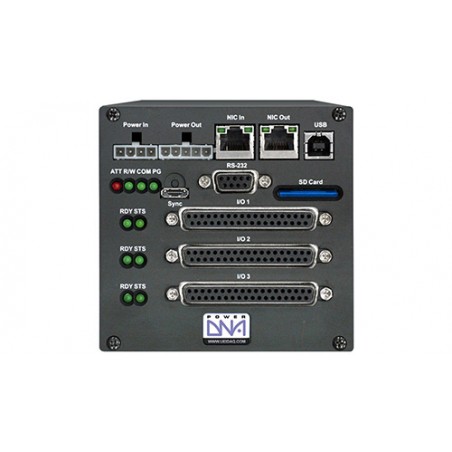PAC (programmable automation controller) cube, 3, 6 or 7 slots for analog & digital I/O, sensors and interfaces modules, ideal for HIL applications, Ethernet 10/100
Chassis contains two basic modules: a CPU module and a communication module. Their task is to control the modules installed in the chassis (analog and binary I/O, sensors, interfaces). The kernel of a real-time operating system (Linux or VxWorks) is installed. The user can implement his own algorithm (coded in C).
The process of creating the target application:
- UEIPAC works in PowerDNA mode, under control of host with Windows/Linux.
- The designer overcomes the whole cycle associated with the development of the target program: algorithm coding, testing, debugging, etc.
- When a properly functioning version is obtained, the C language program is compiled by a cross compiler for execution in the UEIPAC module.
- After saving the execution version in the internal memory, UEIPAC is switched to the PAC (autonomous controller) operating mode
- The previously mentioned steps are repeated until the tests show that the application under development is compliant with the design assumptions.
Features:
- Powerful, compact and rugged
- Provides 3, 6 or 7 I/O slots
- Ideal for HIL (Hardware-in-the-loop) applications
- RTOS Linux, VxWorks
- Flexible: Over 30 I/O boards available including A/D, D/A, Digital I/O, Counter/Timer, Quadrature encoder, Serial, CAN and ARINC 429 communications
- Other specifications: see PowerDNA cubes: DNA-PPC5 and DNA-PPC8
Note: "UEIPAC Linux TK" and "UEIPAC VxWorks BSP" software utilities are purchased separately.


